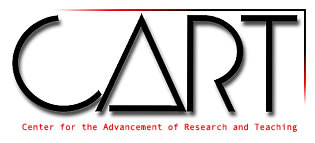Cross-Cultural Currents in the Visual Arts During the Meiji Restoration
Location
Hart 218
Start Time
13-5-2009 10:30 AM
End Time
13-5-2009 11:00 AM
Description
Growing contact with Western nations during the Meiji Restoration created an impact on the visual arts in Japan and stimulated interest in Japanese art in Europe and the United States. Some early works of this era include woodblock prints from the latter half of the nineteenth century. These portray the novel appearances of foreigners in Japanese ports, trade houses established for exchange of goods between west and east, and the development of modern factories and businesses. The rendering of these images often incorporate Western artistic systems of form and spatial illusion. The themes of modernization and progress are particularly celebrated in a spectacular series of three-panel woodblock prints that document scenes from the Sino-Japanese War of 1894-95, works that sought to communicate Japan’s position as a modern nation, not unlike the United States and the countries of Europe.
Among the foreign visitors to Japan were those who then acquired collections of Japanese art. These include Edward Sylvester Morse, Ernest Francisco Fenollosa, William Sturgis Bigelow, Charles Goddard Weld, and Denman Waldo Ross. Their collections ended up in Boston’s Museum of Fine Arts which, as a result, has one of the premier and largest collections of Japanese art in the world. Like Shuji Isawa in making cultural connections between the Boston region and Japan, Okakura Kakuzo, the leading Japanese art historian of the time, worked at the Boston Museum from 1904 to 1913 and oversaw the formation of this collection.
Cross-Cultural Currents in the Visual Arts During the Meiji Restoration
Hart 218
Growing contact with Western nations during the Meiji Restoration created an impact on the visual arts in Japan and stimulated interest in Japanese art in Europe and the United States. Some early works of this era include woodblock prints from the latter half of the nineteenth century. These portray the novel appearances of foreigners in Japanese ports, trade houses established for exchange of goods between west and east, and the development of modern factories and businesses. The rendering of these images often incorporate Western artistic systems of form and spatial illusion. The themes of modernization and progress are particularly celebrated in a spectacular series of three-panel woodblock prints that document scenes from the Sino-Japanese War of 1894-95, works that sought to communicate Japan’s position as a modern nation, not unlike the United States and the countries of Europe.
Among the foreign visitors to Japan were those who then acquired collections of Japanese art. These include Edward Sylvester Morse, Ernest Francisco Fenollosa, William Sturgis Bigelow, Charles Goddard Weld, and Denman Waldo Ross. Their collections ended up in Boston’s Museum of Fine Arts which, as a result, has one of the premier and largest collections of Japanese art in the world. Like Shuji Isawa in making cultural connections between the Boston region and Japan, Okakura Kakuzo, the leading Japanese art historian of the time, worked at the Boston Museum from 1904 to 1913 and oversaw the formation of this collection.
